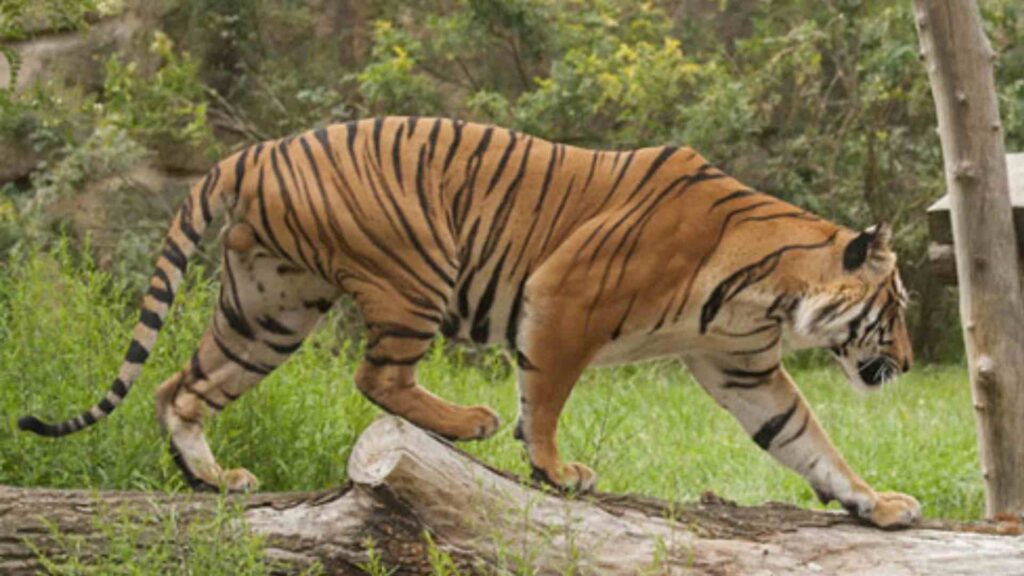Introduction: Nagarahole National Park, a resplendent wilderness sanctuary, is one of India’s most treasured biodiversity hotspots. Cloaked in misty forest and caressed by winding rivers, it is a haven for those who seek communion with nature’s raw and unfiltered beauty.
Geographic Location and Accessibility
Tucked in the Kodagu and Mysore districts of Karnataka, Nagarahole lies on the southern fringe of the Deccan Plateau. It forms a part of the expansive Nilgiri Biosphere Reserve and is easily accessible from major cities like Mysuru (90 km) and Bengaluru (220 km) via road and rail.
Historical Background of the Nagarahole National Park
Originally a hunting ground for the Maharajas of Mysore, Nagarahole was declared a wildlife sanctuary in 1955 and upgraded to a national park in 1988. It now forms an integral part of the Nilgiri corridor, facilitating safe wildlife movement.
Landscape and Ecosystem Diversity
From moist deciduous forests and rosewood groves to grassy swamps and dry deciduous stretches, the terrain is as diverse as its wildlife. The undulating topography, fed by Kabini and Lakshmana Tirtha rivers, creates a vivid ecological tapestry.
Flora of Nagarahole National Park
The forest canopy boasts species like teak, silver oak, Indian kino tree, and sandalwood. Beneath the arboreal giants lies a vibrant undergrowth of shrubs, herbs, and flowering plants that shift with the seasons.
Fauna: The Big and the Small
Nagarahole National Park’s animal kingdom is diverse and abundant. Apart from marquee species like tigers and elephants, it shelters leopards, sloth bears, dholes (wild dogs), spotted deer, langurs, and civets—each playing its role in the ecosystem.

The Majestic Bengal Tiger of Nagarahole National Park
The elusive Bengal tiger roams Nagarahole’s forest with regal command. With one of the highest tiger densities in India, sightings are more than just fortunate—they’re almost expected in peak seasons.
Elephants and the Gentle Giants of the Forest
The park is also part of the largest protected area for Asiatic elephants. Watching a herd traverse a riverbed at sunset is an experience that etches itself deep in memory.
Birdlife Paradise: Feathered Friends of the Canopy
Nagarahole is home to over 270 species of birds. From the raucous Malabar pied hornbill to the regal crested serpent eagle, the avian orchestra here is both vast and vocal.
Safari Options: Jeep, Boat, and Bus
Safaris are offered in various formats—jeep rides for intimacy, boats for serene sightings near Kabini, and bus safaris for group exploration. Each mode offers a different vantage point of the park’s dynamic life.
Best Time to Visit the Nagarahole National Park
The ideal time to visit Nagarahole is between **October and May**, when the forest is more open and wildlife is easier to spot. During monsoons (June to September), the park is lush but largely inaccessible.
Entry Gates and Core Safari Zones
The main entrances include Nanchi Gate, Veeranahosahalli Gate, and Kutta Gate. Popular safari zones include Antharasanthe, Nagarahole, and Kabini Backwaters, each known for its unique wildlife activity.
Famous Safari Trails and Wildlife Hotspots
The Kabini River Trail is famed for sightings of predator-prey dynamics, while the Nagarahole-Kutta trail cuts through dense forests teeming with deer herds and stealthy leopards.
Accommodation Options Near the Nagarahole National Park
From eco-luxury lodges like Evolve Back Kabini to cozy government guesthouses and budget homestays, the area offers a wide range of lodging. Many are nestled along the riverfront for spectacular sunrise views.
Photography and Tips
Golden-hour safaris offer prime conditions for wildlife photography. A DSLR with a telephoto lens is ideal, though even smartphone users can capture stunning shots with proper lighting and positioning.
Conservation Efforts and Park Management
Managed by the Karnataka Forest Department, Nagarahole is part of Project Tiger and Project Elephant. Anti-poaching camps, camera traps, and community outreach programs play a pivotal role in protecting its fragile ecosystem.
Must Read: Mount Abu Rajasthan – Monsoon Getaway in the Desert Hills
Local Tribes and Cultural
Their sustainable ways of life, folklore, and honey-gathering traditions enrich the socio-ecological fabric of the region.
Ecotourism and Sustainable Travel Practices
Visitors are encouraged to minimize plastic usage, maintain silence during safaris, and avoid feeding wildlife. Many lodges promote rainwater harvesting and solar energy, aligning tourism with conservation.
Nearby Attractions to Explore
Combine your trip with a visit to Bandipur National Park, Wayanad Wildlife Sanctuary, or the serene Irupu Falls. Each adds a layer to your jungle experience.
Travel Tips for First-Time Visitors
Pack neutral-colored clothes, binoculars, sunscreen, and insect repellent. Booking safaris in advance is crucial, and early morning slots offer the best chances for animal encounters.
Conclusion: The Untamed Symphony of Nagarahole National Park
Nagarahole National Park is more than a wildlife reserve—it’s a symphony of sights, sounds, and silences. From the roar of a tiger echoing through the forest to the gentle rustle of elephant herds, the park is a living, breathing testament to the splendor of the wild. Every visit offers a new story, a new rhythm, and a deeper reverence for the natural world.

1 thought on “Nagarahole National Park Wildlife Safari Adventure Lover should Visit”